Assistant Professor Dr Dalibor Đukic presented the results of research conducted with the support of the Ferenc Mádl Institute of Comparative Law and the Central European Professors’ Network.
Religious symbols are present all around us: on state flags, emblems and official insignias, in classrooms, public offices, courtrooms, mass media, hospitals, and public transportation. One could state that wherever there are people, there is a symbol with religious roots. In the past three decades in Serbia, religious symbols—and religion itself—have become an inherent part of the public space. In this case, ‘public space’ should be defined in the broadest of terms to include state and public institutions and all spaces outside of the private sphere and the inner domain of religious organisations.
According to its constitution, the Republic of Serbia is a secular state. There are at least two concepts of secularity that coexist in Serbia. The first interprets the constitutional secularity of the state as a strict separation of church and state, and consequently as a constraint to the presence of religious symbols in the public sphere. However, the second concept views secularity in a more benevolent light, one that does not exclude religion from the public sphere. According to the latter perception, separation is understood as an opportunity for cooperation. Although the Constitutional Court upheld the second concept, the two conflicting views persist in public discourse.
Several circumstances generate ardent controversy about the presence of religious symbols in the public sphere. The first is the presence of symbols that most citizens perceive as exclusively religious, such as icons, crucifixes and statues of saints. The second is the wearing of religious symbols in public spaces such as courtrooms, educational institutions and state offices. The third controversy involves the compatibility of the principle of secularity with the practice of constructing religious symbols in public spaces and monuments financed by the government, local authorities, or state-owned companies. Lastly, but most importantly, is the question of whether the manifestation of religion in public space is constitutional, or more precisely, whether religious services and ceremonies that include the use of religious symbols and are performed in public or state institutions violate the principle of state secularity.

